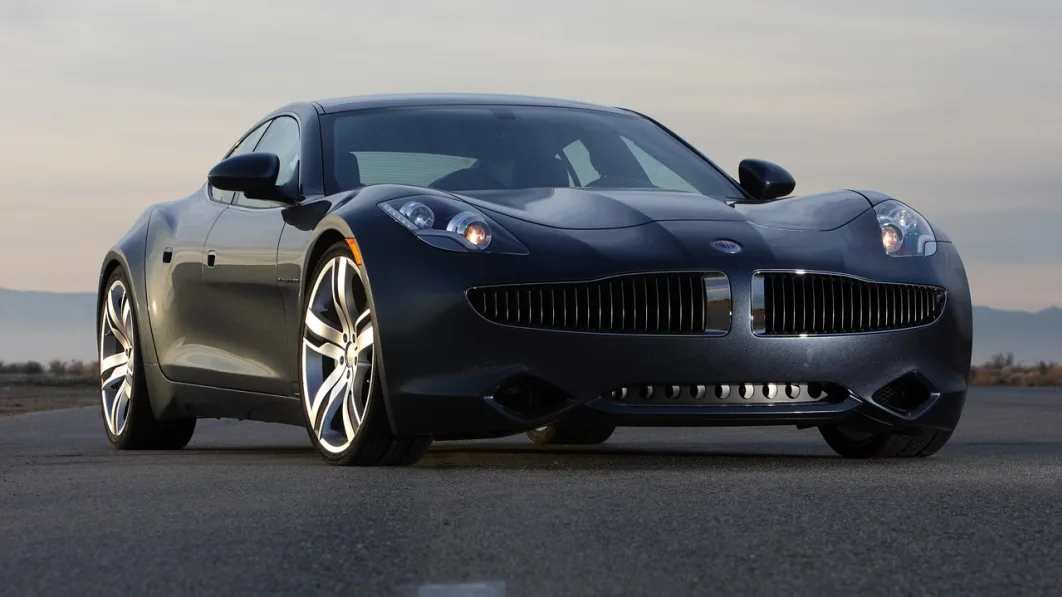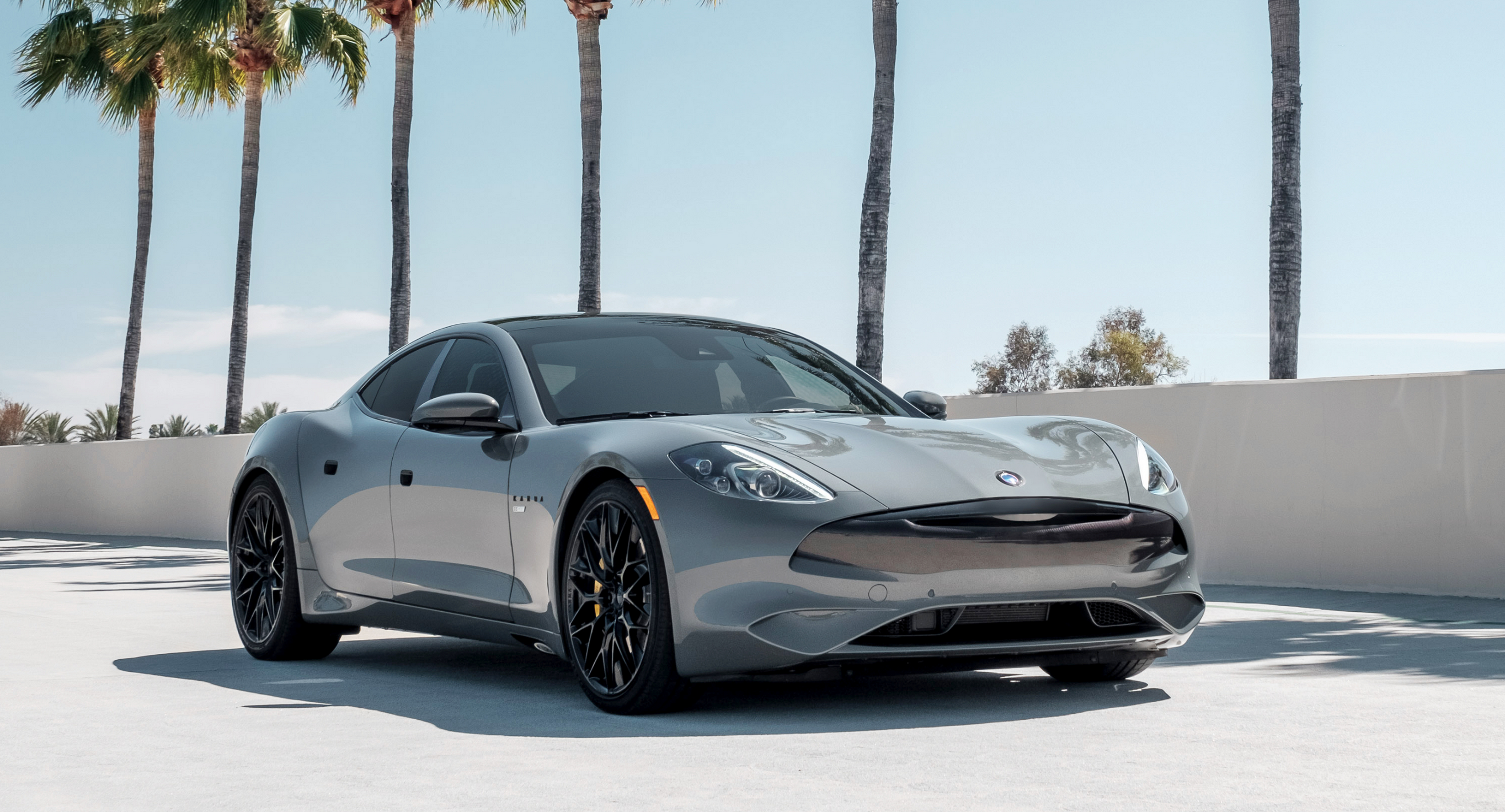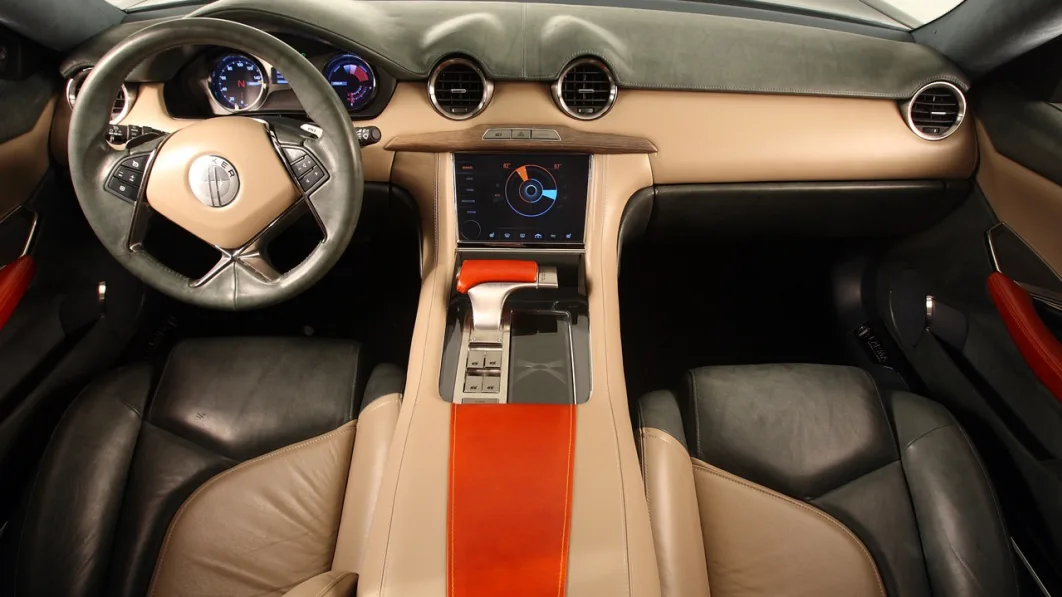Even if you don’t know Henrik Fisker’s name, you may be familiar with some of his work as a car designer: he drew the BMW Z8’s retro-modern styling before going to work for Aston Martin’s design department, and he contributed to the styling of the Tesla Model S.
Following his time at Aston, he started Fisker Automotive, whose first production car was the Fisker Karma, a stylish four-door luxury sedan with a plug-in hybrid powertrain.

Fisker Karma
The Karma’s drivetrain is built around a General Motors 2.0L turbocharged four-cylinder engine, which powers a generator from where the electricity in turn powers a battery that drives two rear-mounted electric motors, providing 402 hp and 959 lb-ft of torque.
In late 2012, Fisker’s battery supplier went bankrupt, and Henrik Fisker resigned as the company’s CEO in early 2013. In 2014, the company’s assets were sold to a Chinese conglomerate that renamed the company Karma Automotive and relaunched the car as the Karma Revero in 2017.

Fisker Karma
In 2021, Karma replaced the Revero’s four-cylinder with a 1.5L turbo three-cylinder made by BMW and renamed the car as the Revero GT. Karma also added the GS-6 to the lineup as a lower-priced alternative to the Revero. Both the Revero GT and GS-6 boasted 536 hp and 550 lb-ft of torque.
The original 2012 Fisker Karma was so short lived that Natural Resources Canada didn’t publish fuel consumption estimates. However, it did publish ratings for the revived Karma Revero starting in 2017, with estimates of 4.6 Le/100 km on electricity alone, and 13.0/12.0 L/100 km (city/highway) when the gas generator’s engine was supplying the electricity. Those estimates improved to 3.9 Le/100 km and 11.8/11.2 L/100 km (city/highway) in 2018.

Karma Revero
In 2021, the Revero GT and its BMW-sourced powertrain were rated for 3.8 Le/100 km on electricity, and 10.7/11.0 L/100 km (city/highway) with the engine powering the car.
Over the years, the Karma Revero’s electric driving range improved from 51 km in 2017 to 98 km for the BMW-powered 2021 Revero GT and GS-6 variants.
Used pricing
Carfax Canada only has used vehicle pricing for the 2012 Fisker Karma, which it values at $42,065 for the EcoSport trim level.
Karma Revero
Trim levels and features
Fisker offered the original Karma in EcoStandard, EcoSport, and EcoChic trim levels. EcoStandard came with items like passive keyless entry, Xenon headlights, an auto-dimming mirror, heated/auto-dimming side mirrors, two-zone A/C, heated front and rear seats, synthetic leather upholstery, 22-inch wheels, and a six-speaker stereo.

Fisker Karma
EcoSport added a nine-speaker stereo, navigation, and a power-adjustable steering column. The EcoChic replaced the animal-based leather and suede with vegan materials, and its cabin was dressed up with wood sourced from the aftermath of California wildfires.
Underwhelming design and performance
Regardless of whether you’re looking at one of the original examples of the Fisker Karma or a later Karma Revero, you’re buying a car that received lukewarm reviews when it was new.
Here’s Bloomberg’s review of the Revero, where the writer clearly did not like her time behind the wheel. Consumer Reports did a long-term evaluation of the original Fisker Karma, which earned one of the organization’s lowest overall scores for a new model.

Fisker Karma
Damaged drive shafts
Here, a technician familiar with the Fisker Karma helps another owner diagnose a grinding sound that comes from the car’s rear axle, which you can hear in this short video. Apparently, some early models had drive shafts made of metal that was too soft and could be damaged by the electric motors’ torque, resulting in that nasty noise.
Software updates and charging issues

Fisker Karma
Fisker issued periodic software updates aimed at improving the Karma’s user experience, but some of them – like the one discussed here – caused more problems than they fixed, according to some owners. Here’s a related discussion in which owners talk about common software-related problems like losing radio presets, the trunk not opening when the car is turned off, turn signals not working, and parking proximity sensors that go off continuously.
Another common issue is a car that won’t go into gear, which is also often attributed to faulty software.
This Karma owner asked for help diagnosing a charging fault.
Karma Revero
Water leaks and infotainment quirks
Some Karma owners suggest doing the DIY fix detailed here to prevent water leaks that can damage electronics located under the cowling at the base of the windshield.
Here’s a discussion about user-friendliness of the Fisker Karma’s infotainment system.

Fisker Karma
Safety ratings
Neither the U.S. National Highway Traffic Safety Administration (NHTSA) nor the Insurance Institute for Highway Safety (IIHS) tested the Fisker Karma’s crashworthiness.
Recalls
Transport Canada issued one recall for the Fisker Karma to fix short-circuited cooling fans that could cause a fire.
In the United States, Fisker recalled cars under a couple other campaigns, one of which involved replacing high-voltage batteries in the Karma due to improperly installed coolant hoses. In 2017 and 2019, Fisker also recalled some U.S.-market cars to replace front passenger airbag inflators that could explode. You’ll find detailed of those recall campaigns here.






